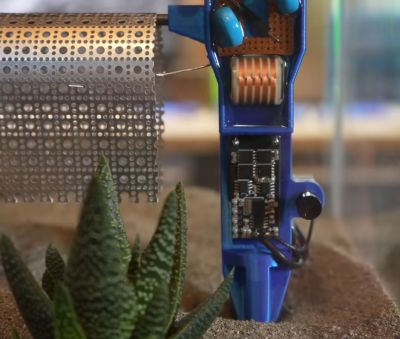Kombucha! It’s a delicious fermented beverage that is kind to your digestive system and often sold in glass bottles. You don’t just have to use those bottles for healthy drinks, though. As [Simranjit Singh] demonstrates, you can also use them to create your very own plasma tube.
[Simranjit’s] build begins with a nice large 1.4-liter kombucha bottle from the Synergy brand. To make the plasma tube nicely symmetrical, the bottle had its original spout cut off cleanly with a hot wire, with the end then sealed with a glass cap. Electrodes were installed in each end of the tube by carefully drilling out the glass and installing small bolts. They were sealed in place with epoxy laced with aluminium oxide in order to improve the dielectric strength and aid the performance of the chamber. A vacuum chamber was then used to evacuate air from inside the chamber. Once built, [Simranjit] tested the bottle with high voltage supplied from a flyback transformer, with long purple arcs flowing freely through the chamber.
A plasma tube may not be particularly useful beyond educational purposes, but it does look very cool. We do enjoy a nice high-voltage project around these parts, after all.
Continue reading “Turning A Kombucha Bottle Into A Plasma Tube”



















